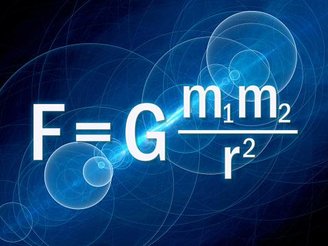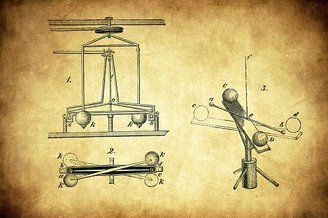Since astronomer Nicolaus Copernicus practically revolutionized celestial spheres with the publication of his heliocentric model in 1543, our planet has gone from the center of the universe to a mere prop of the vast cosmos. Because of this displacement, measuring the Earth’s dimensions has become vitalIt is used not only to prove the new model, but also to compare us with other celestial bodies and measure star distances.
Although some evaluations such as diameter, circumference, surface area can be made by direct observations using geodetic methods (triangulation, trilateration and leveling), when it comes to mass, which we colloquially call “weight”, the process takes hundreds of years. The estimate is years away and some questions still arise among experts.
Just as we want to know how many kilograms the Earth weighs, we are actually looking for its mass, that is, the amount of matter the planet contains, regardless of its location in the Universe. Weight depends on where the object is measured: A person weighing 80 kg and 784.8 Newton on Earth would have only 129.6 N on the Moon, or 16.5% of his own weight.
So what is the mass of the Earth?
If understanding the basic concepts of the weight of objects in terms of mass and the gravitational force acting on them requires some basic and astronomical knowledge, imagine what it would be like to apply this logic to an entire planet.
To reach the desired number, scientists first had to understand Newton’s law of universal gravitation and observe the Earth’s gravitational effects on other bodies. Measurement of the gravitational constant and application of other observations, which we will see below, It was possible to calculate the mass of the Earth as approximately 5.9722×1024 kilograms, equivalent to 5.9722 septillion kilograms according to NASA.
This value may still fluctuate slightly as there is space dust reaching the planet and some gases leaking from our atmosphere. In any case, since it is not possible to place the Earth on a cosmic scale, scientists had to triangulate its mass using other measurable objects.
“Weighing the Earth”: the law of universal gravitation

The first principal component to estimate is Correctly the mass of the Earth was Isaac Newton’s law of universal gravitationBecause it provides the mathematical basis for calculating the gravitational force between the Earth and other objects. It starts from the principle that everything that has mass also has gravitational force, that is, “there will always be some force between any two objects”.
In the formula, Newton calculated the gravitational force (F) between two objects by multiplying the objects’ respective masses (m1 and m2), dividing by the square of the distance between the objects’ centers (r²), and then multiplying this number by the gravitational constant (G), also known as the intrinsic force of gravity.
However, it was not until 111 years later that physicist Henry Cavendish managed to determine the “G” of the problem, the first precise measurement of the gravitational constant. Using an experiment called torsion balance, the Englishman arrived at a value very close to: It is greater than the one currently accepted by CODATA, which has been increased from 6.67 x 10 to -11 N.m²/kg². The result is a scientific notation equal to 0.0000000000674.
“The cracks the universe presents”

As you see, This value of G is extremely small because the gravitational force that governs the Universe is also extremely weak.. In order to feel this, which is imperceptible to us, we must have a body mass similar to that of planets or stars. To give you an idea, the gravitational force between two people is 10.20 It is many times smaller than that between the Earth and the Moon.
Today, more than two centuries after Cavendish’s experiment, his method continues to be used, although it is limited compared to modern technologies. Although milestones in the history of physics, these two tools provide measurements that are prone to human error, according to Stephan Schlamminger, a metrologist at the US National Institute of Standards and Technology (NIST).
Schlamminger doesn’t think these discrepancies are necessarily bad, Schlamminger told LiveScience. “These are cracks that the universe gives us so that we can use our levers to gain greater scientific understanding,” he concludes. This makes the search for the exact “weight” of the Earth a question that continues to motivate active research in modern physics.
Did you like the content? So share this on your social networks and get the opportunity to find out if it is possible to drill the Earth from one end to the other.
Source: Tec Mundo
I’m Blaine Morgan, an experienced journalist and writer with over 8 years of experience in the tech industry. My expertise lies in writing about technology news and trends, covering everything from cutting-edge gadgets to emerging software developments. I’ve written for several leading publications including Gadget Onus where I am an author.













